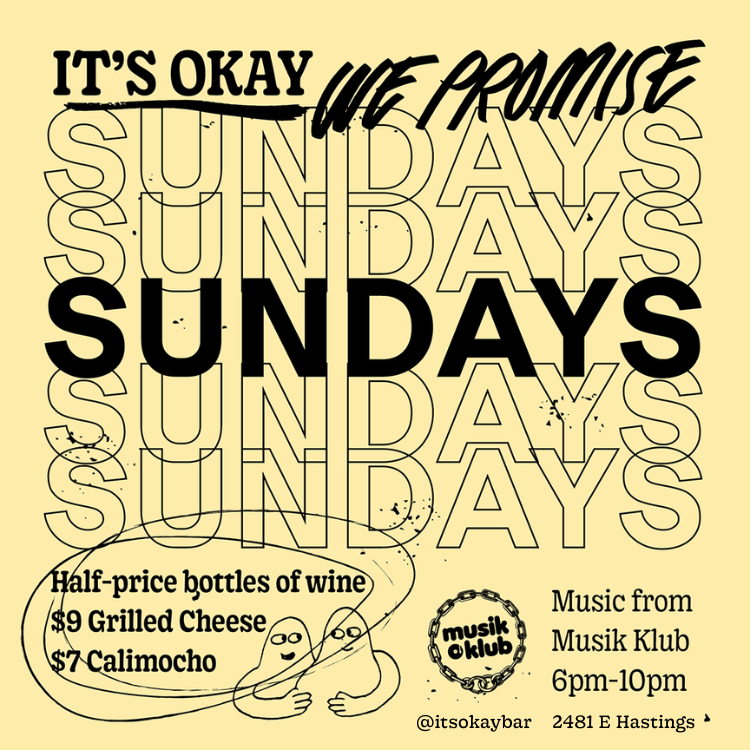By Loose Lips Mag
@looselipsmag
Vancouver’s Nancy Lee and Emmalena Fredriksson want you to get immersed in Tidal Traces, a 360°-video VR dance piece where the viewer joins in, at this week’s Vancouver International Women in Film Festival. Released through the NFB Interactive, three lasharacters (dancers Zahra Shahab, Rianne Svelnis and Lexi Vajda) explore a new and uncertain world—moving between tranquility and ominousness, beauty and peril—and it stars you as the fourth character.
Lee, a new media artist, and choreographer Fredriksson co-created the four-minute, 360° immersive experience, which will be set up in the Vancity Theatre’s atrium during screenings at VIWIFF starting Wednesday (March 7) and running until Sunday (March 11).
Loose Lips sat down with the collaborative duo to chat the ethics, challenges, and endless possibility of VR.
What were the challenges of the production side when creating Tidal Traces?
Nancy: There was a number of challenges. The site was a creative choice that we made. We wanted the site that would justify the use of a 360° medium, and that it was worthy of being transformed out of this world to. And the site itself presented many challenges: water, film, and technology, first of all, it’s very difficult to work in water. Once we were shooting, we had to get out of the way of the 360° shot; we would run and lay in the sand, and watch the dancers from afar; it was difficult and different to not be able to direct and communicate with the performers.
Tidal calculations were also part of the challenges. We had to calculate the rate of the tide going out, so we would carry the gear out at waist level, look for a good spot for the dancers to dance on, and we would set the camera up, and then get [Emmalena] to bring the dancers out from shore. By the time the dancers got out to the water, the tide was far enough out that they could dance and we could shoot.
It was much more of a performer’s medium and we just had to let them do their thing. The entire team on set was there to support the dancers.
Emmalena: It’s different from any process. [For the dancers], we had to support them and empower them to make the decisions that would work for the artistic vision, and to empower them to know when enough was enough. It was cold in the water and with the wind, and the shells and the crabs they could cut their feet on. There was a lot to think about in the power dynamics: both between us and the technical team, and between us and dancers. That changed a lot of things. Also, the challenges of the site: for the dancing because it’s on tidal mudflats, the ground would change every time, so we spent a lot of time out there rehearsing. We’d go out and shoot, and be like “Oh no, the sand is so much softer than it was yesterday so this jump is going to be much harder.” There’s the site and the technology and identifying who’s calling the shots – and the dancers had to call the shots themselves.
Tidal Traces (Trailer) from NFB/marketing on Vimeo
Can you explain more about the ethics of VR in making this film?
Nancy: For us, because the power dynamics shifted so much from traditional film or traditional dance making, we had to rethink how we navigate this medium. We often think of ethics surrounding the piece itself and how it engages the audience. But we wanted to look at the ethics of the production process because so much trust is being placed on the performers.
Between our creators and our audience, we wanted to create an experience where the audience could fully enjoy, and not feel uncomfortable or claustrophobic. It’s a much different experience when it’s more sensational, and more stuff is happening and you’re being bombarded. But we wanted the viewer to watch this piece, without being overwhelmed or feeling cyber-sick. We wanted to go in with all of those considerations in mind, and with the pleasure and comfort of the viewer, and that’s why we wanted the dancers to start far away in the beginning so that the viewer could ease into the experience.
Emmalena: In the very beginning of the project, we were very interested in what dance could do for VR and what VR could do for dance. Through the year long residency, we were curious about what does this do? How can this change my mindset as as choreographer and holding space? And we were into letting it changed how we worked. We did a public choreography for VR workshop, and one of the conversations that came up after was, as a performer, there’s a vulnerability of always being seen. Because there’s a delay in the witnessing and performing, there are ideas around who holds the power, or where the vulnerability [lies]. There’s a big question about the roles between viewer and performer.
How will Tidal Traces be presented at the Vancouver International Women In Film Festival?
Nancy: Volunteers will be helping viewers get into the headsets. It’s not like a regular film screening or performance, where you go and sit and you know what to expect. With this, it’s important to let the viewer know what they are about to see, and make sure that there is another space, or a comfortable place to sit.
Because it’s such a new medium, everyone is still figuring out how to present the medium. Exhibiting the piece is still a learning process for us.
Emmalena: What we’ve encountered so far is that there’s a lot of festivals where they’ve never done a VR screening before, and so they’re like, “We don’t even know how to present this.” In some festivals, there are already VR 360 categories. In some ways, it’s more of an installation because you can’t screen it to 400 people at once, and there needs to be a space to let people see it.
What are the themes behind Tidal Traces and the emotions it’s trying to evoke?
Nancy: In terms of aesthetics, from a visual standpoint, there are dystopian elements. Is it tranquil, or is it sci-fi? Are they on a different planet? That informed a lot of our costume design, and we wanted to use these block shapes to contrast the water. Everything is fluid and organic, so we wanted the costumes to stand out from that. Even having their hair braided was a practical choice because they were submerged in water sometimes.
Emmalena: In the movement materials, a lot of it went from support to competition; there was a lot of ritual and transformation; and from there something heightens and tenses a little bit, and it ended in a question of what’s next? Something is changing and we don’t know what—there’s a tidal shift of something, but we’re picking up traces of it, and that shift is both on a collaborative plain but also the individuals have different journeys within.

Kristi and Brittany are the co-founders and co-editors of Loose Lips Mag. Together, they’re building their feminist media empire—leaving the patriarchy, charcuterie boards and empty bottles of wine in their wake.You can find them in Gastown sniffing out other women warriors or fuelling up at local coffee shops.




